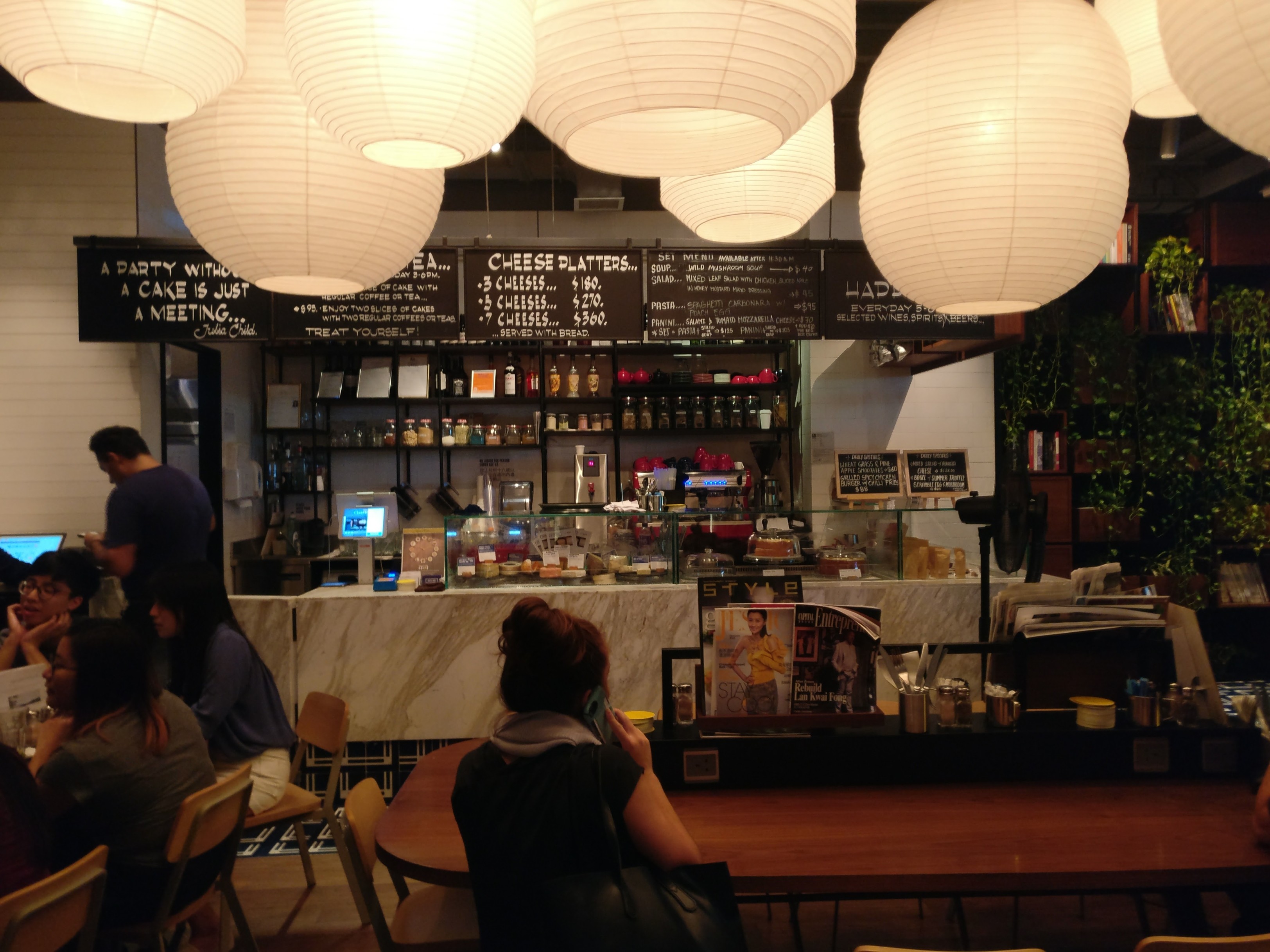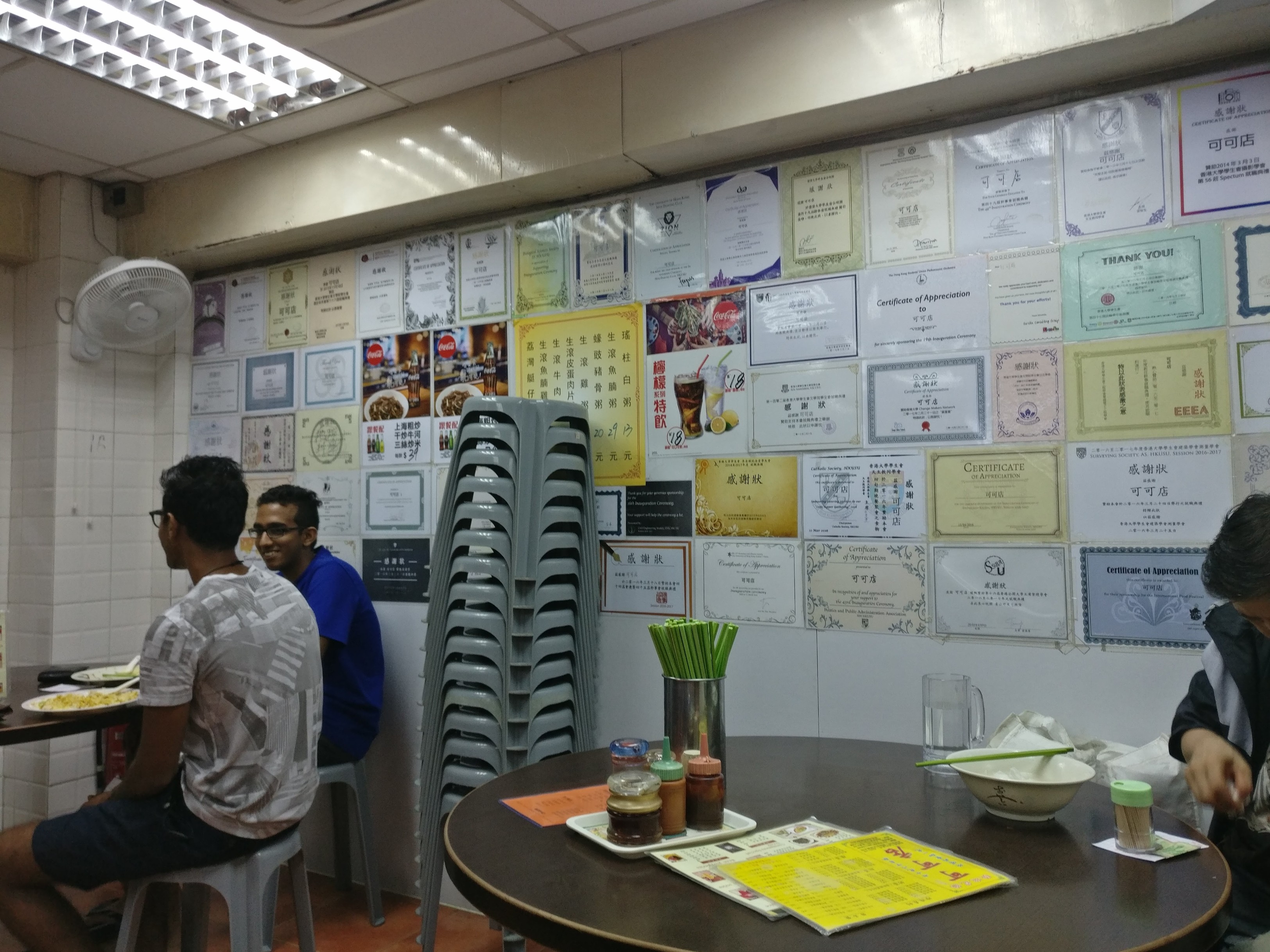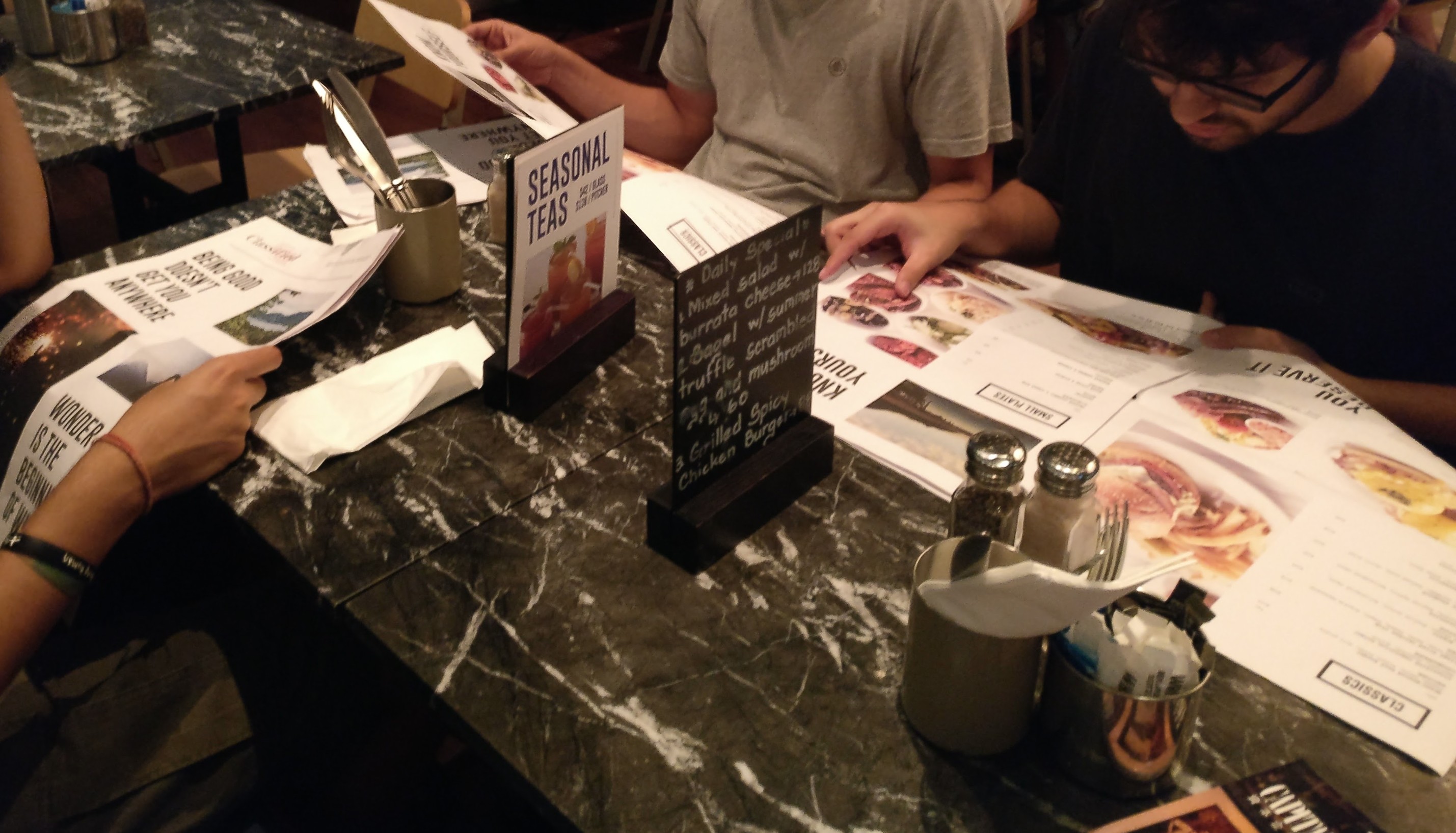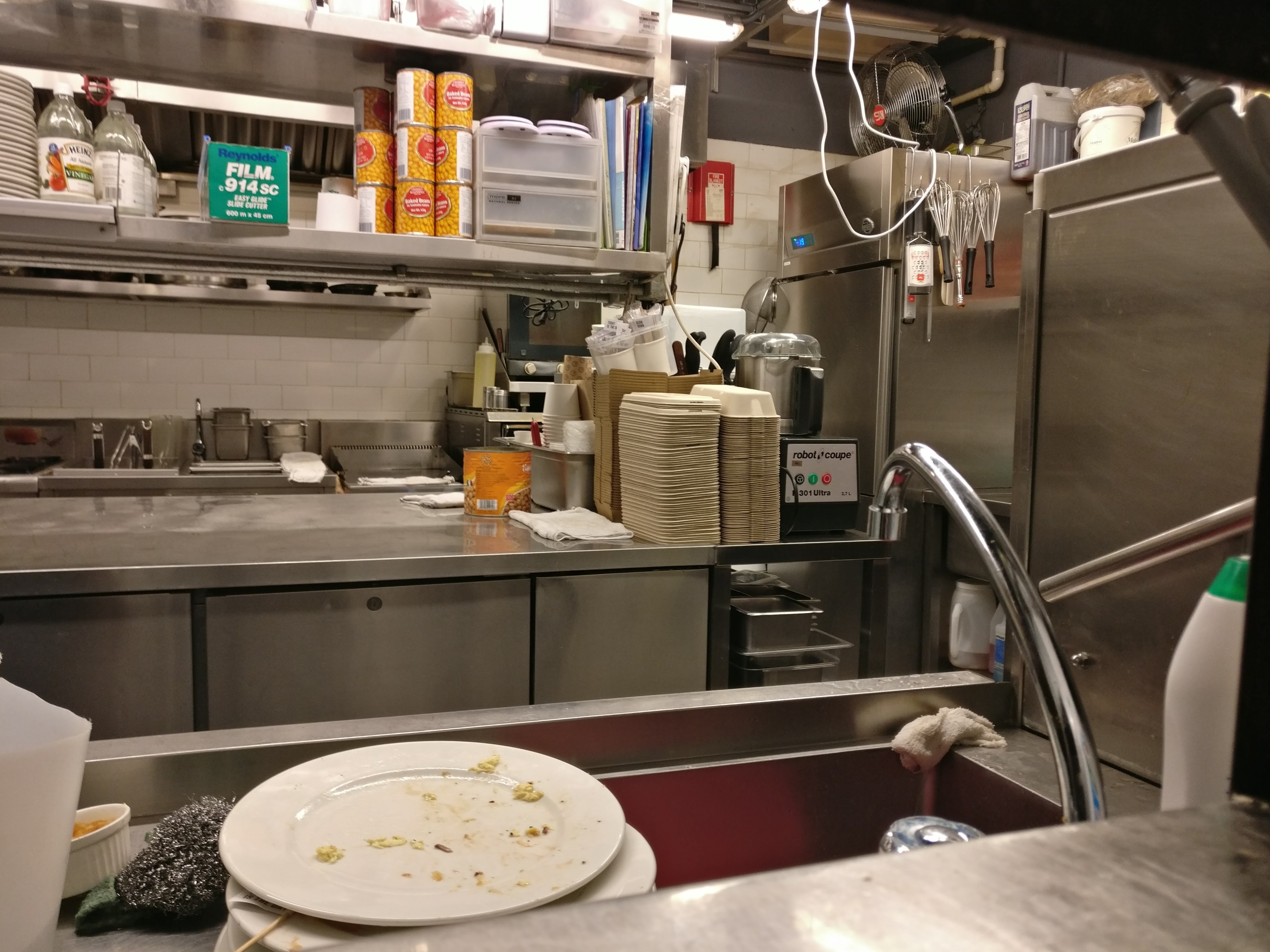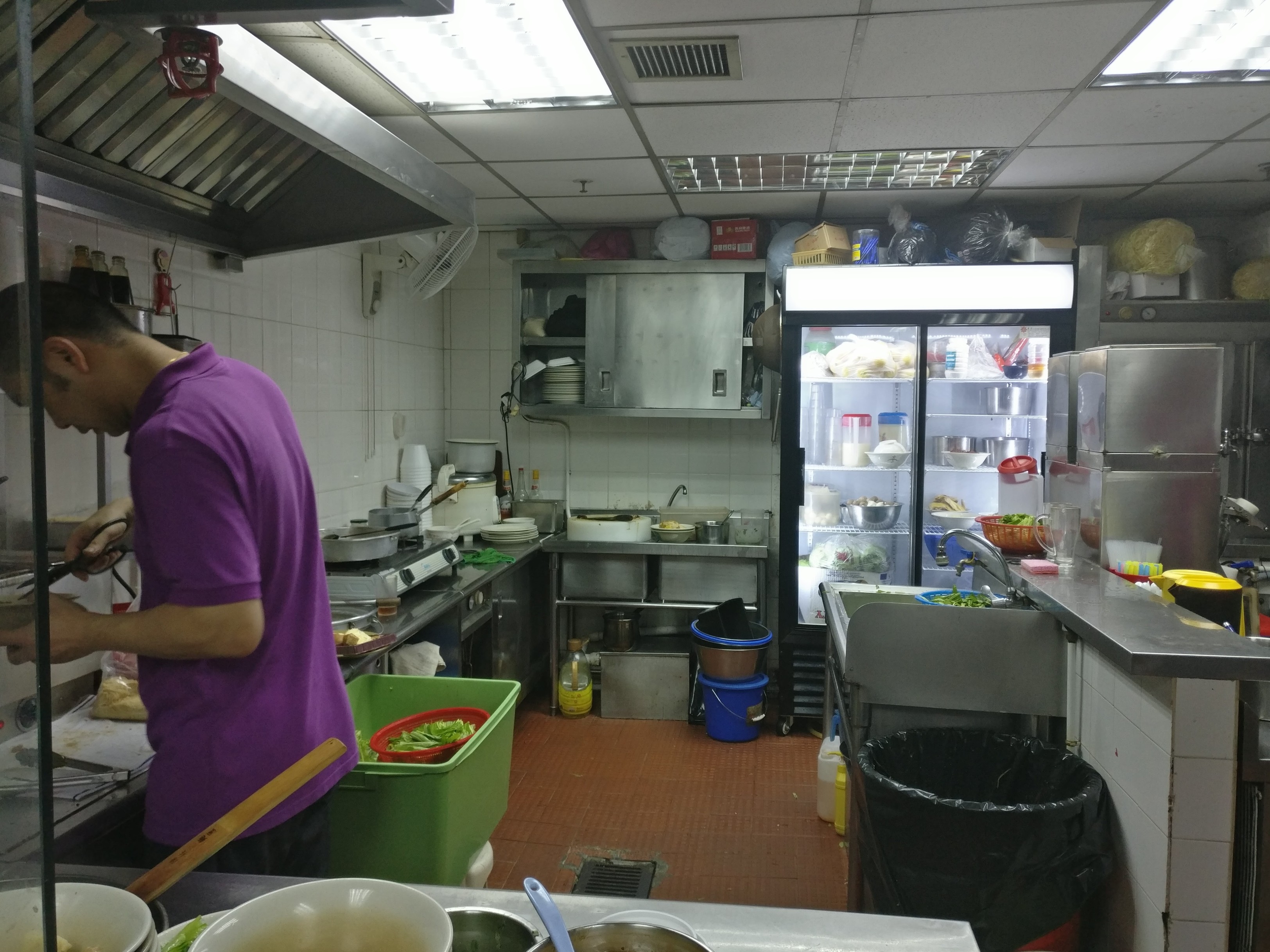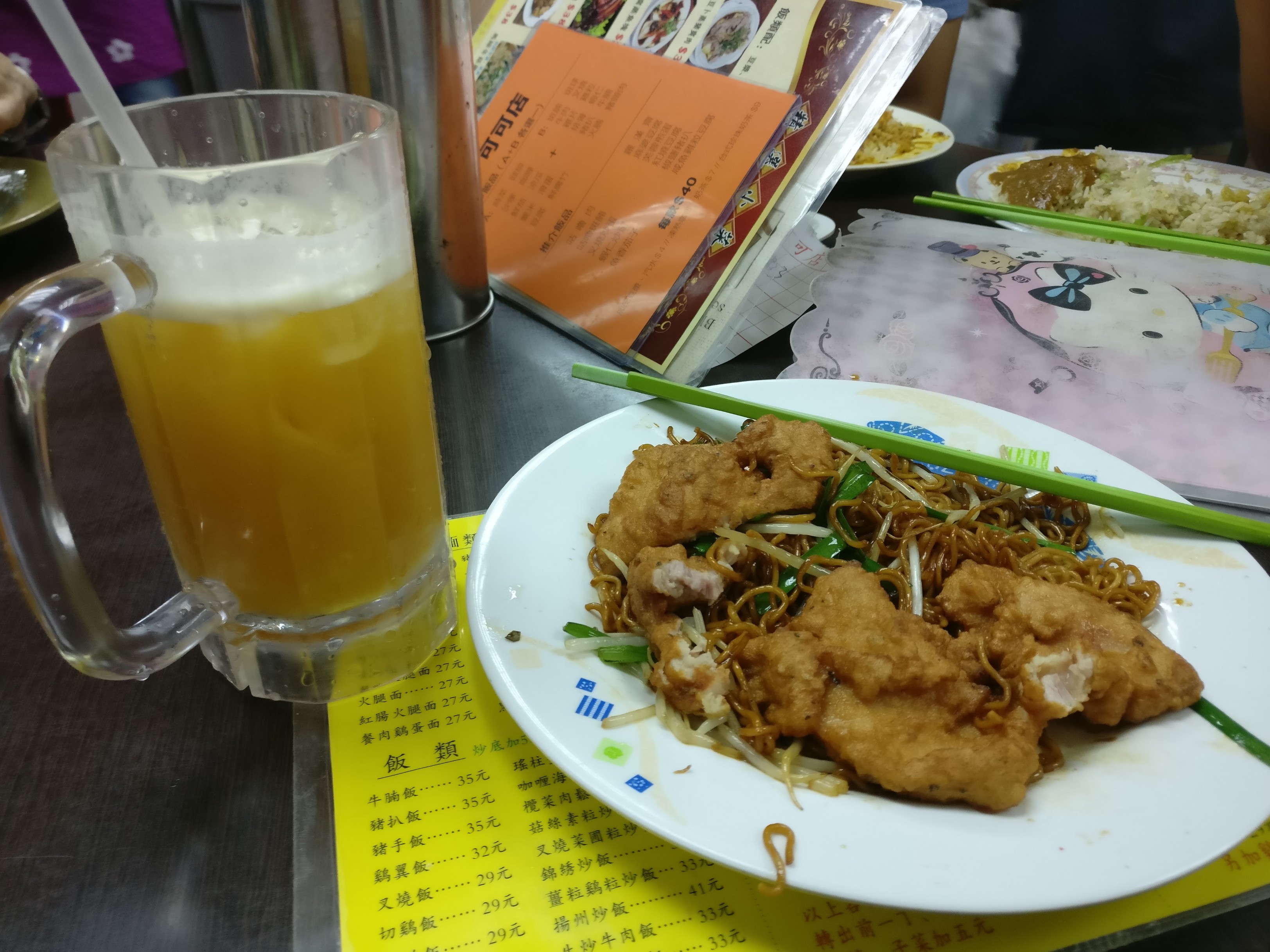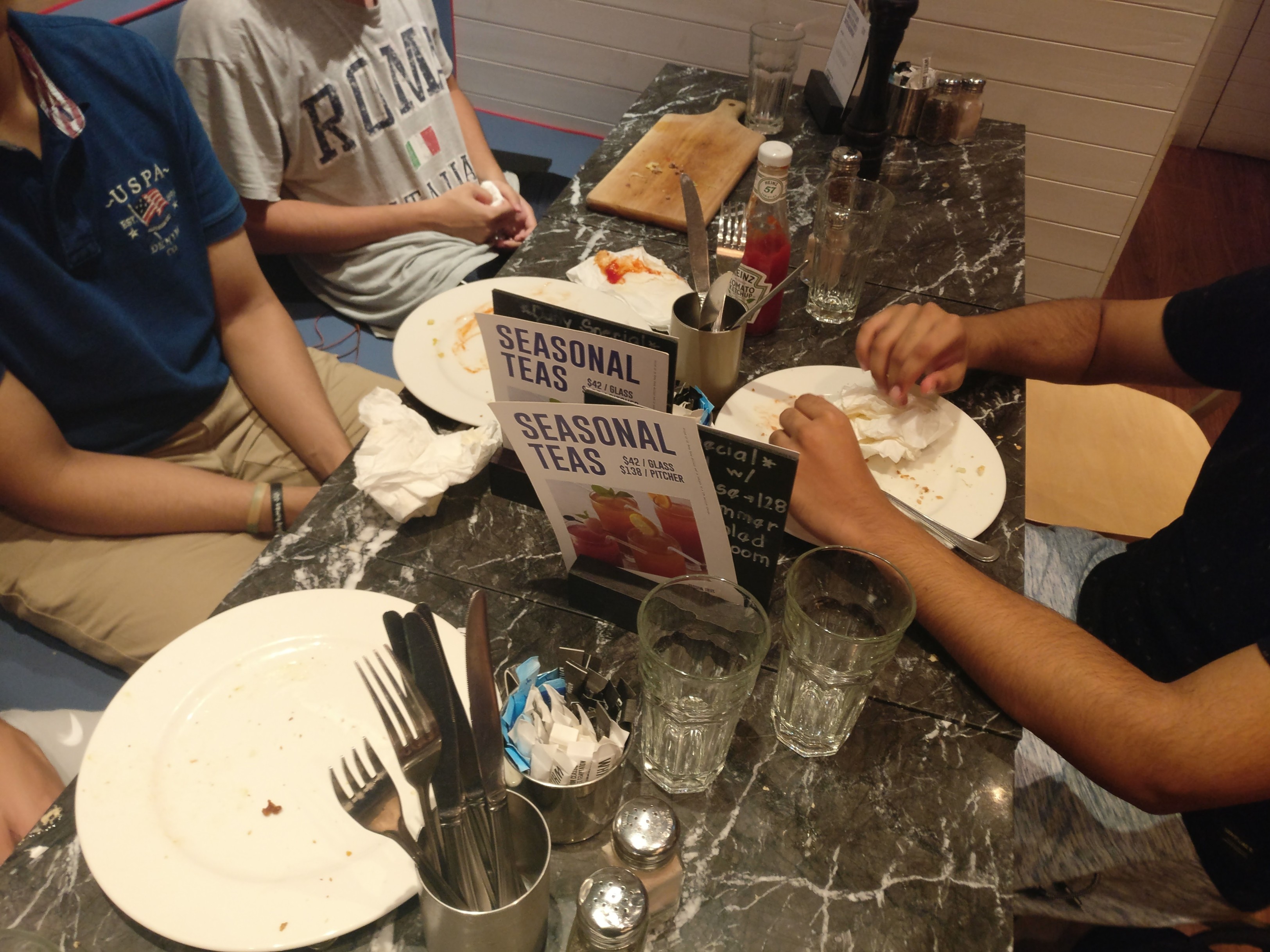About Project.
This project was part of the course IIMT3623: Design Thinking Concepts and Applications . Our task was to reimagine the dining landscape and create a dining based product for our collaborator Asiamiles. The time duration for the project was 3 months .
My Role
This was an individual project, thus I was responsible for all parts of the product design process from concept to final prototype.
PechaKucha Dining
A series of photos from a visual ethnography exercise exploring the subjectivity of the dining experience.
Research

Contextual Interviews
9 interviews were conducted primarily in restaurants to have a diverse sample of customers in the context of dining.

Visual Ethnography
This involved taking pictures and using them as nodes to see the connections between different aspects of the experience.

Tripadvisor Reviews
Reviews provided a good assesment of how people relate to their restaurant experience.

Client Research
Discussions were held with the client to understand business objectives and integrate them into the design.
Concepts
Why do we Dine?
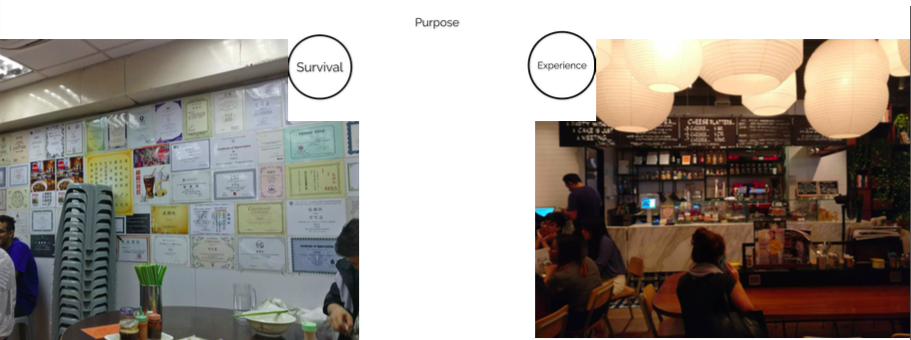
What is an experience?

Since the 20th Century, there is a trend in consumption and human activity called Romanticism.
“Romanticism tells us that in order to make the most of our human potential we must have as many different experiences as we can. We must open ourselves to a wide Spectrum of emotions; we must sample various kinds of relationships; we must try different cuisines; we must learn to appreciate different styles of music. One of the best ways to do all that is to break free from our daily routine, leave behind our familiar setting, and go travelling in distant lands, where we can ‘experience’ the culture, the smells, the tastes and the norms of other people. We hear again and again the romantic myths about ‘how a new experience opened my eyes and changed my life’.” -Yuval Noah Harari
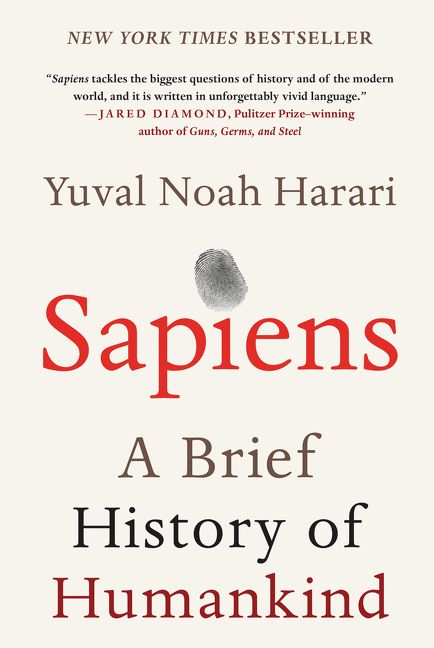
Deconstructing the restaurant experience

Dining Experiences are Stories

What is a story
It is a narrative that relates to a life experience or a fictional world triggering our memory, sensations and letting us experience a wide variety of emotions. Dining and stories are always linked and cannot exist without one another. While one might be the experience itself, another is the retelling of the experience in a way that affects how we perceive this memory. In fact, stories can create memory before food arrives on the table. Thus making the food appear more delicious and purposeful.

Stories provide another cerebral layer to our sensory experience
Approach
User Personnas
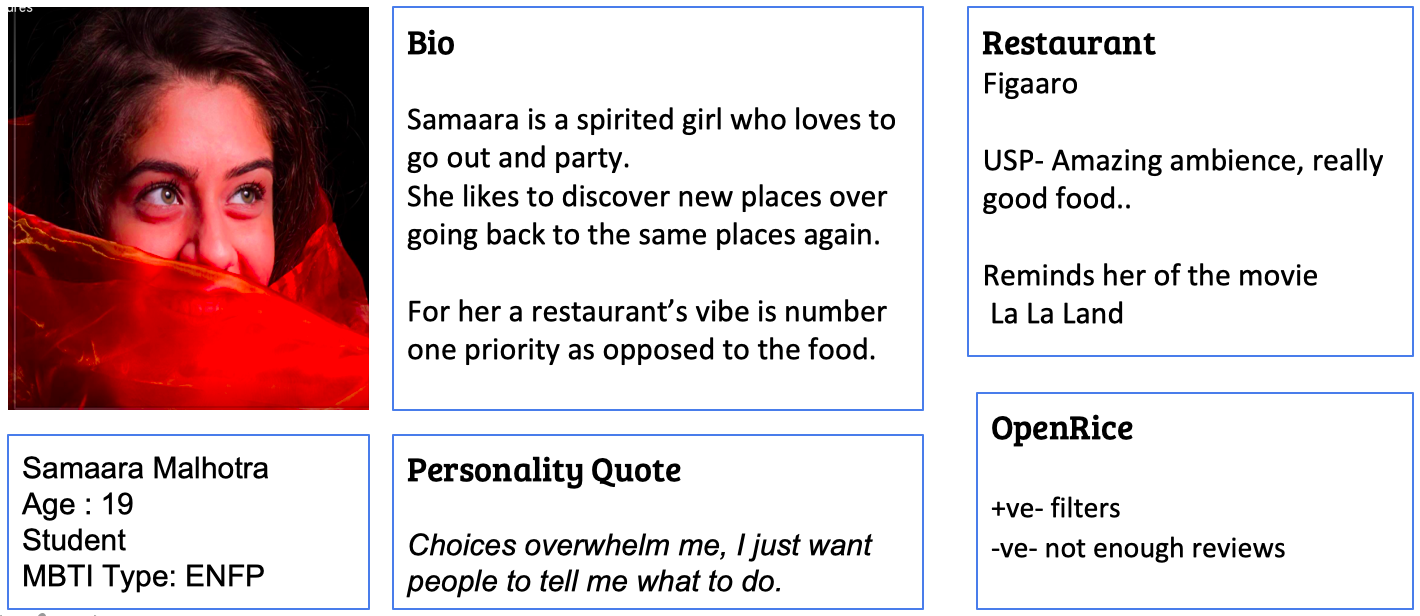
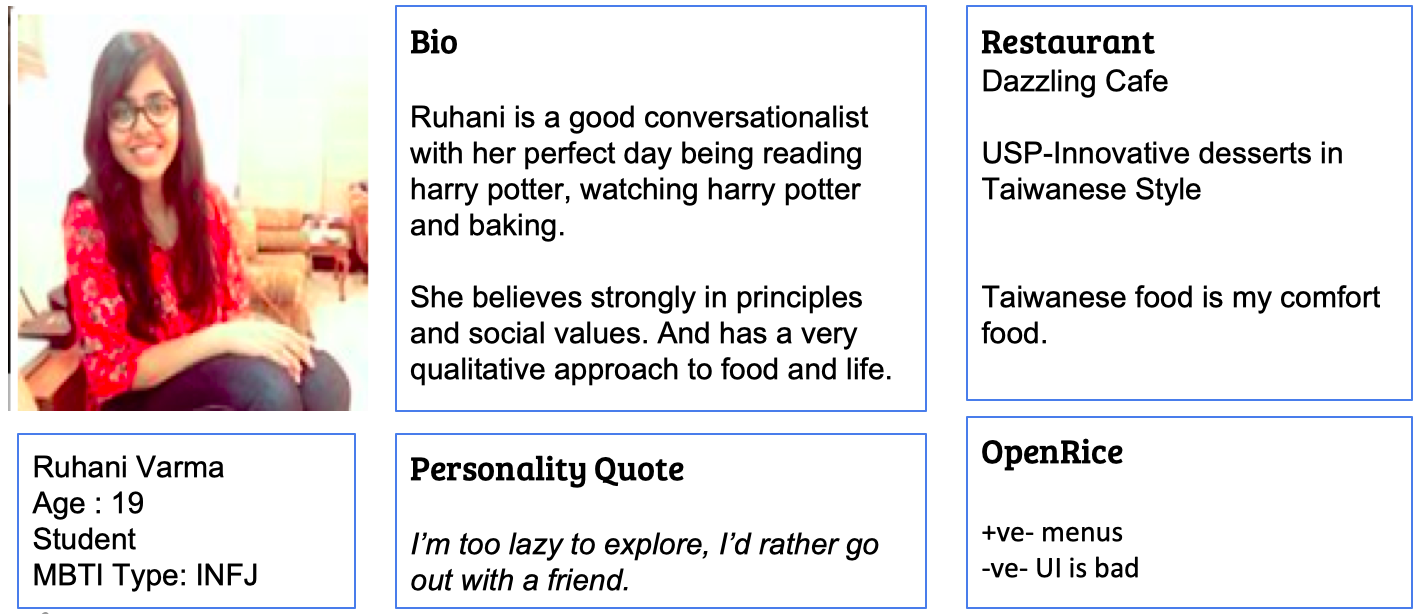
AsiaMiles Customer Journey

Problem Areas
Recommendations
Reviews/Memories
Trending and popular
Stories
The diagrams start from the identified problem areas and analyse how they are connected to the overall restaurant experience.

Digital and physical identity interact with each other to create the restaurant’s identity.

As AsiaMiles has lesser control over the physical identity, it should capitalise on the digital identity creation. This identity can be created/ enhanced when AsiaMiles feeds in information for the restaurant brand.
Asiamiles needs to incentivise customers to provide this information based on their subjective experiences.
Designs
When the user enters a restaurant that is an AsiaMiles member, a review notification pops up at bill payment wherein the user is prompted to put in his/her review. They can choose to either answer in a quick question/answer format or a straight review format and earn miles for reviewing.
Reviewer Side
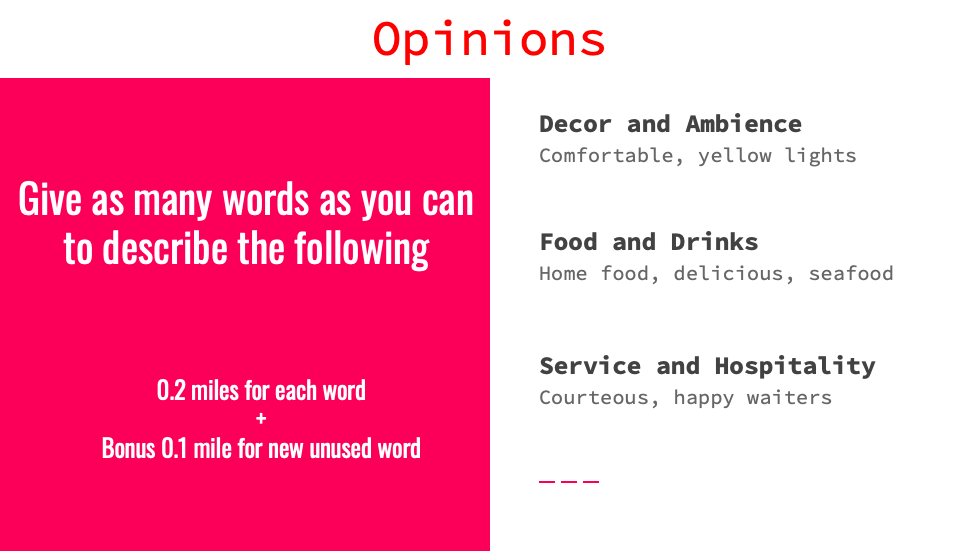
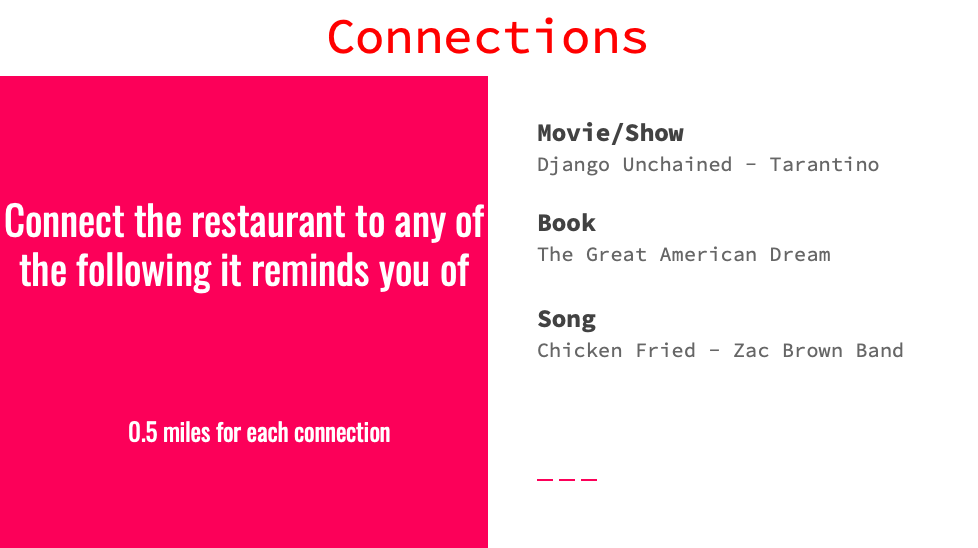
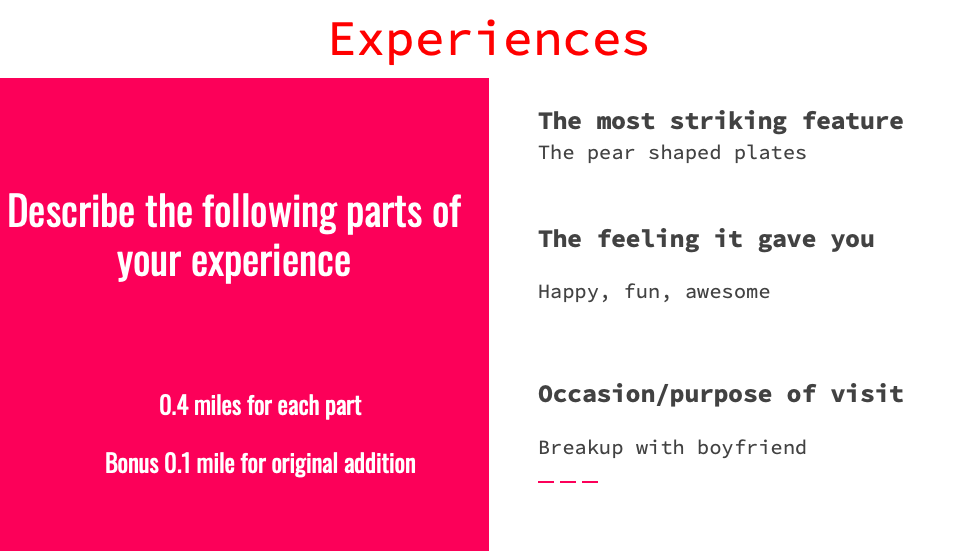
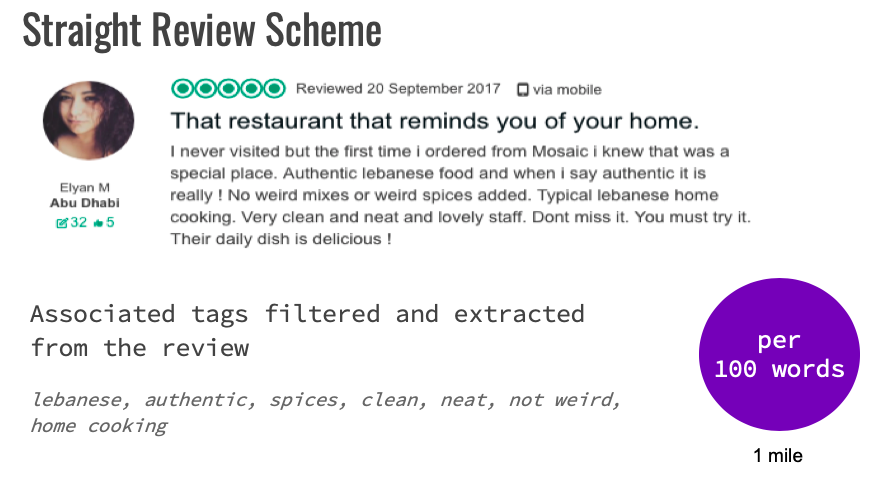

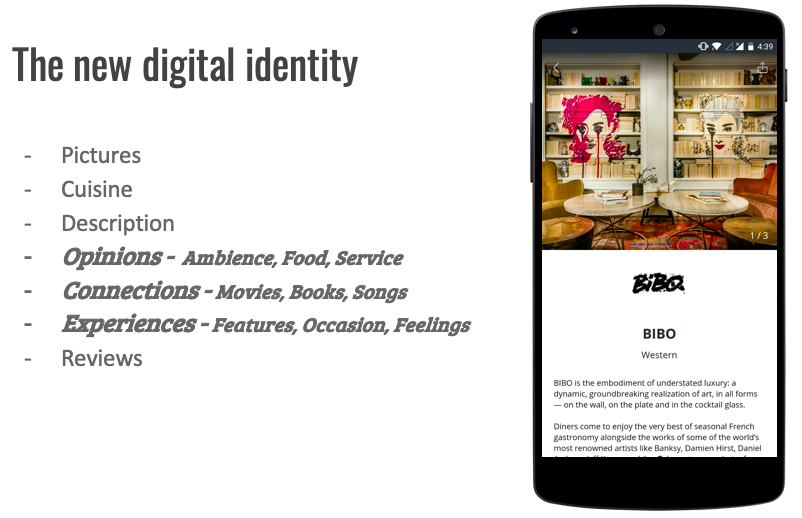
Home Screen

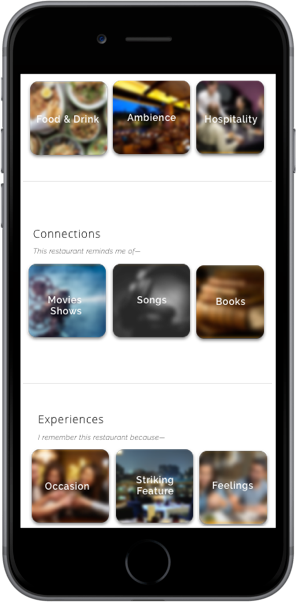
User can search for a specific tag or browse the categories to see the variety of tags others users haves used previously.
Search and Inside Category Feelings
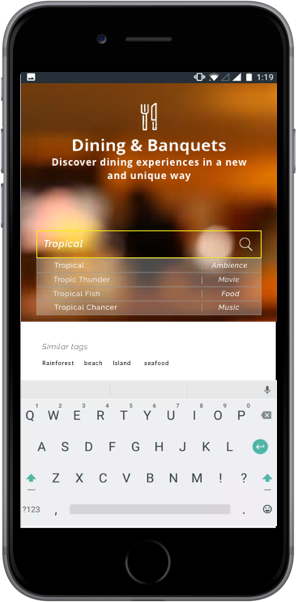
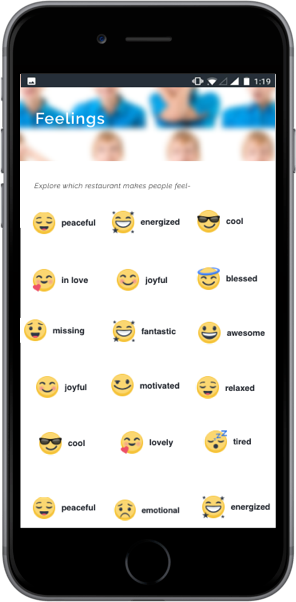
Search Results
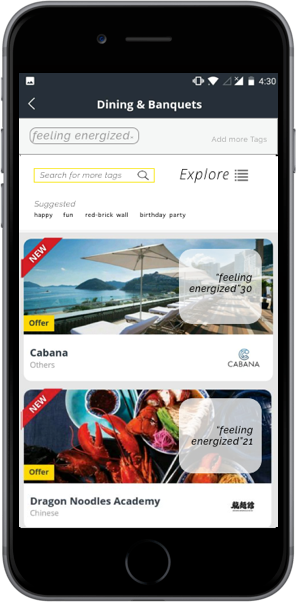
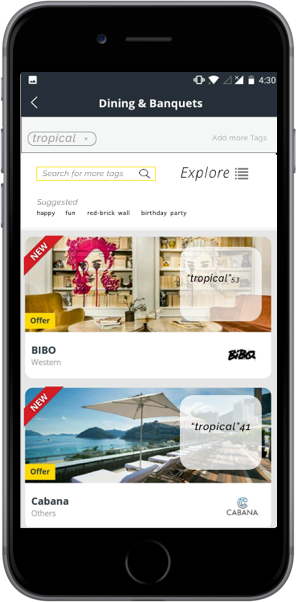
The user can see the associated tags of the restaurant in its different categories. The associated number tells us how many users have tagged the restaurant with the same attribute.
Restaurant Screen
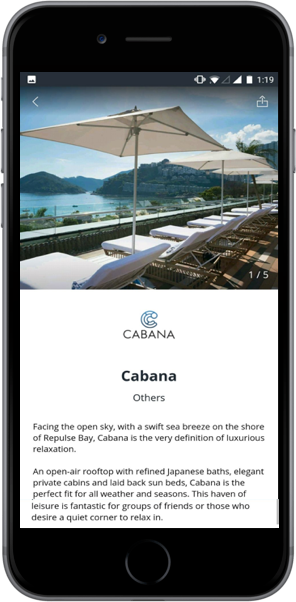
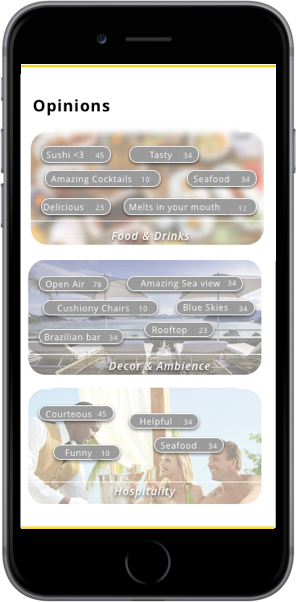
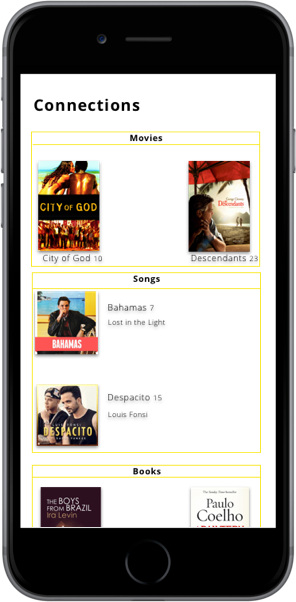

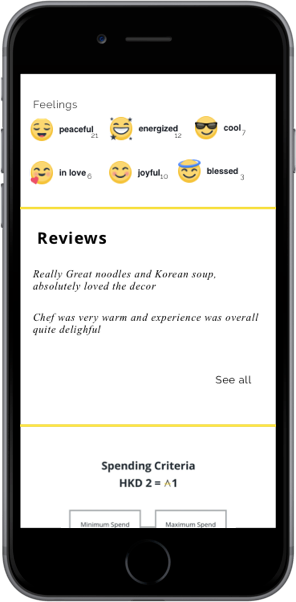
Information Architecture
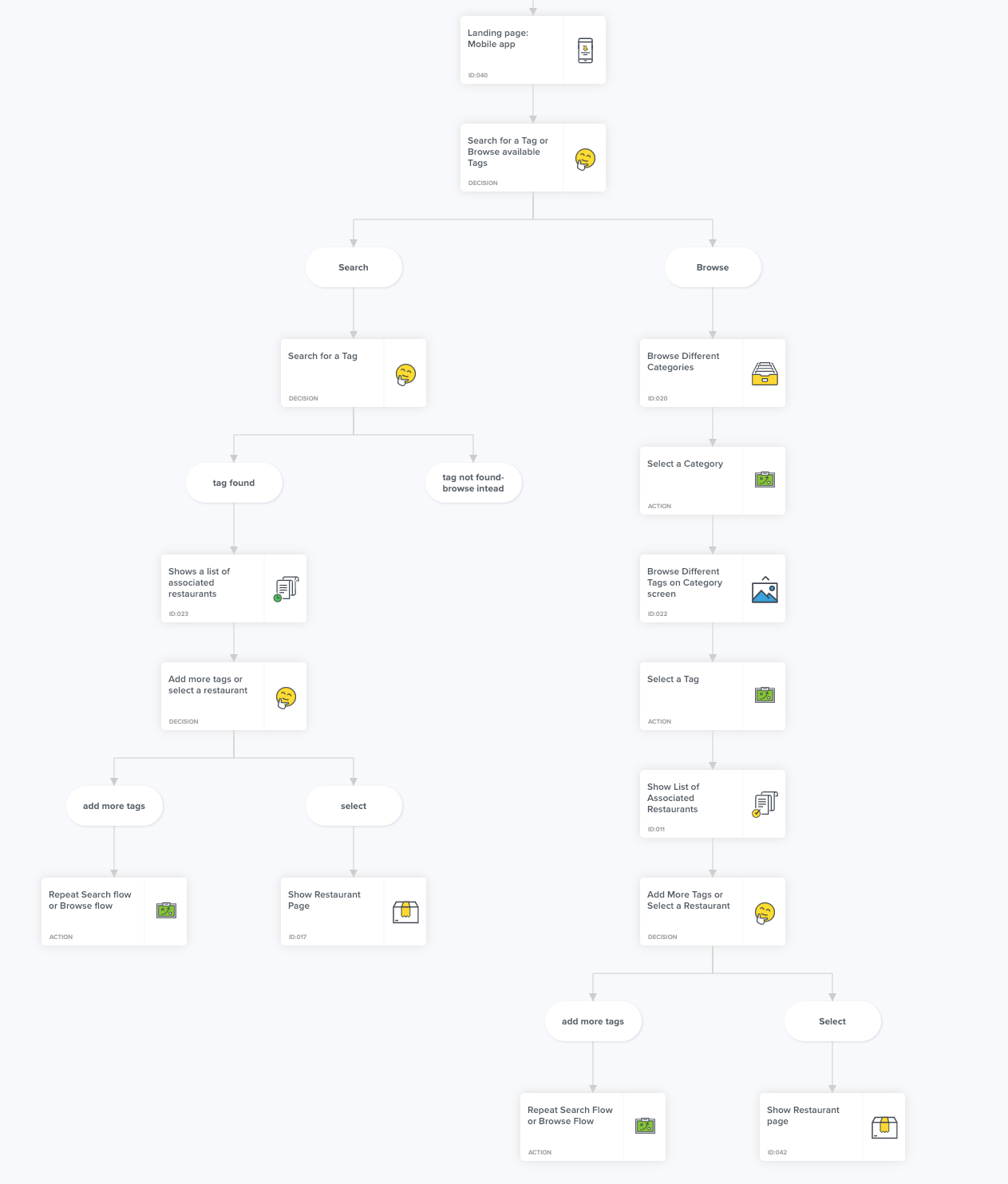
Storyboard
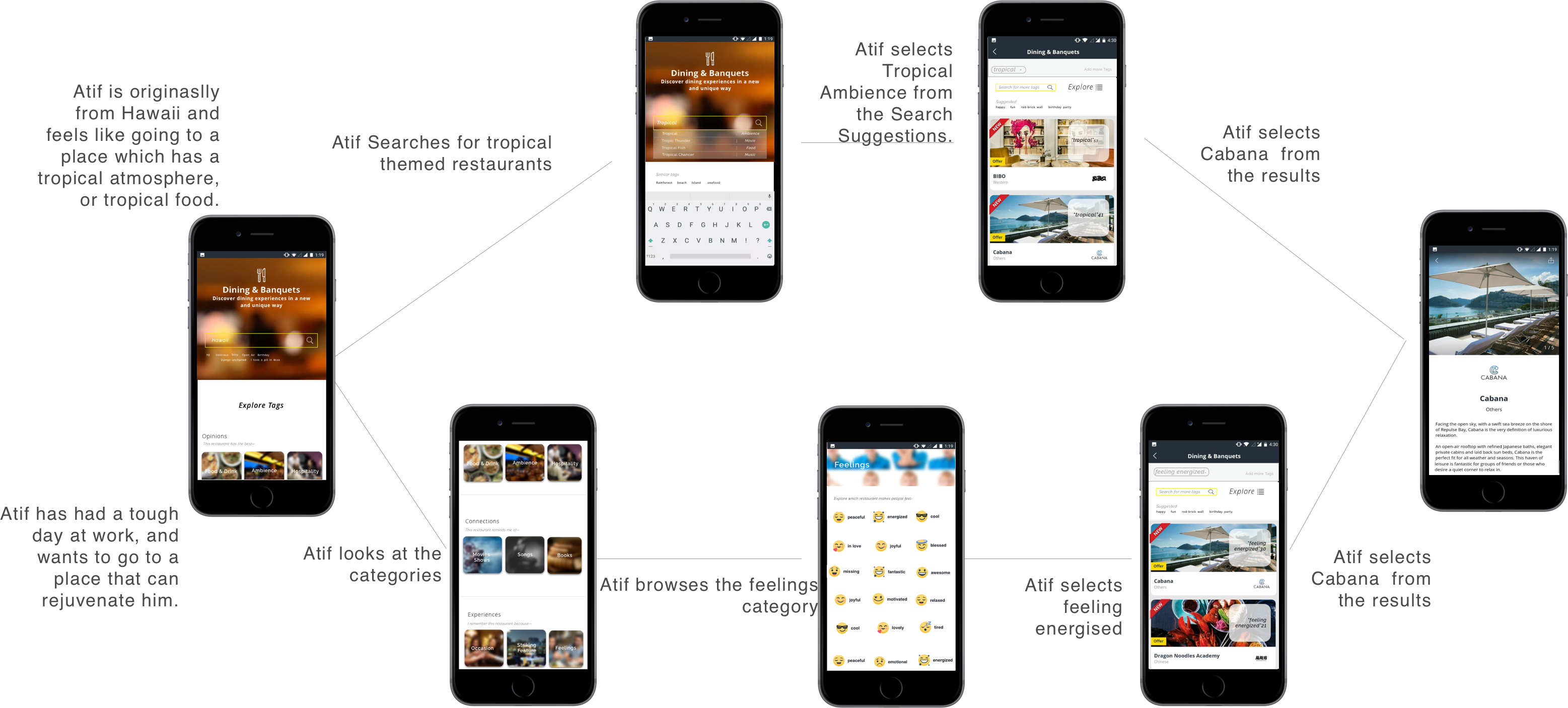
Value for Customers and Restaurants
-Gives customers a unique Digitally searchable Restaurant identity
-Engages people in recording their experiences forming enhanced memory
-Give restaurants a qualitative analysis of its customers
Value for Asiamiles Dining Program
-Engages people in restaurant discovery in a way that no other program/app does.
-Creates a unique value proposition for restaurants to join the AsiaMiles dining program.
-Integrates AsiaMiles into people’s lives and lifestyles in an enriching and personal way.
Final pitch to client at Asiamiles Hong Kong Office

